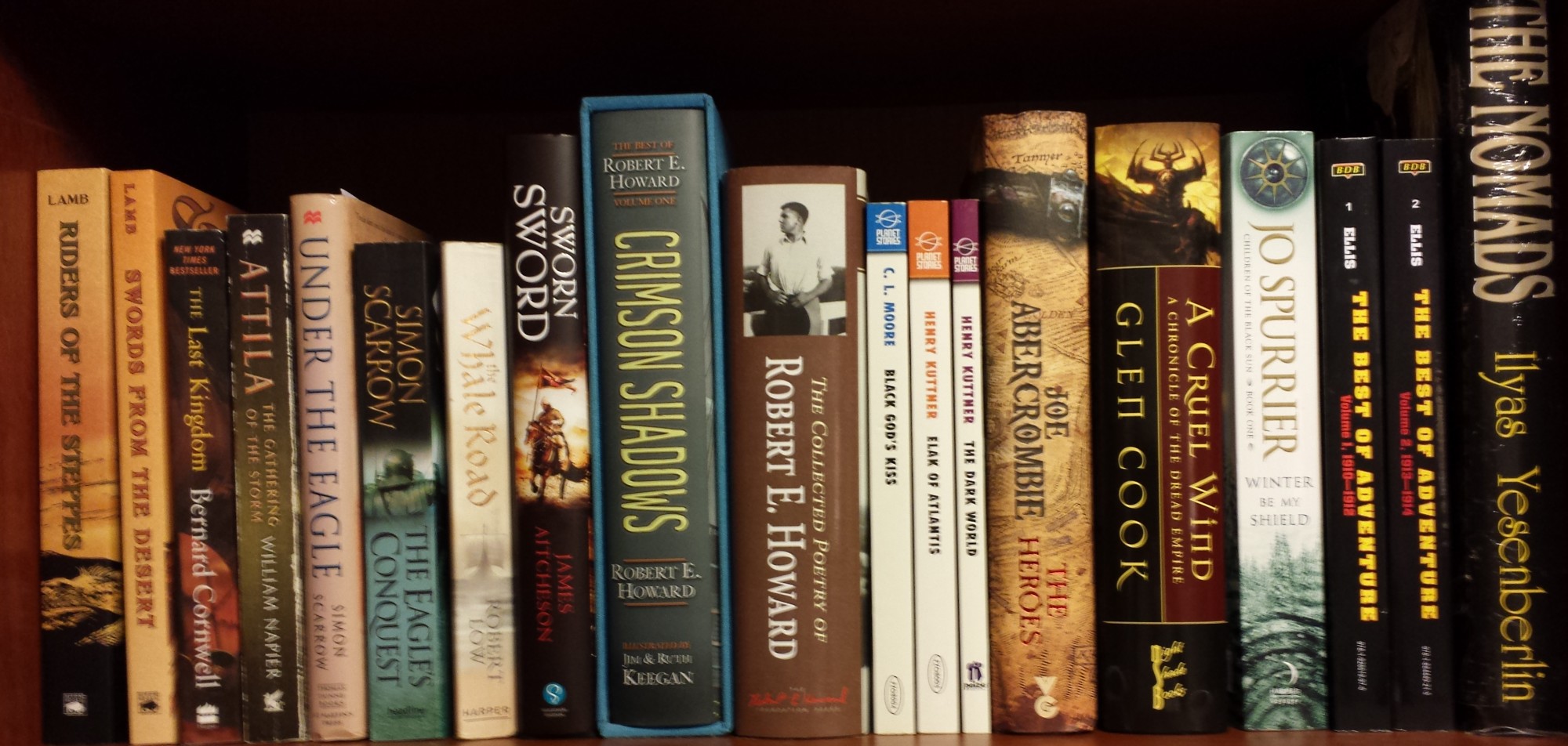 The Horror Stories of Robert E. Howard
The Horror Stories of Robert E. Howard
Robert E. Howard
Del Rey
trade paper $18.00
ebook 12.99 Kindle Nook
Today’s story is a shift away from the weird westerns we’ve looked at the last two days. Howard is best known for the series characters Solomon Kane, Kull, Bran Mak Morn, and Conan of Cimmeria. In more recent years, he’s also gotten recognition for El Borak, Sailor Steve Costigan, and Breckenridge Elkins. But there were other characters who appeared in multiple stories, and two of these were John Conrad and a man simply called Kirowan. They were experts on the occult, and seem to be Howard’s attempt to try his hand at the occult detective yarn. These stories are part of Howard’s Mythos tales. Yog-Sothoth is mentioned in passing in this one.
In “Dig Me No Grave”, the story is narrated by Kirowan, an approach Howard abandoned for the later stories, in which he kept the first person perspective but had an unnamed narrator.
Kirowan is awakened by Conrad in the middle of the night. Conrad has just left the side of John Grimlan, who has died in a most unpleasant manner. Years earlier Grimlan had made Conrad swear to follow the instructions in a sealed envelope after his death. Conrad was to follow these instructions no matter how much Grimlan might change his mind. As he was dying Grimlan begged Conrad not to follow the instructions but to burn the envelope.
The instructions say Grimlan is to be laid out on the table in his library with seven black candles placed about his body and an incantation in a second sealed envelope read. Fearing what the envelope contains, Conrad has sought Kirowan’s aid. Grimlan was a follower of the cult of Malik Tous, who is rumored to be an incarnation of Satan.
The men go to Grimlan’s house, which has no electricity or gas lights. (This story was published in Weird Tales in 1937 but was certainly written years earlier; it wasn’t unusual for isolated houses, as Grimlan’s is described, to have only lamps or candles for light.) As they approach the library upstairs, light comes from under the door. The men enter to find Grimlan’s body laid out on the library table, covered with a robe. Seven black candles are burning about the body. In the corner is an old Oriental man in a yellow robe, upon which is embroidered an image resembling a peacock, the symbol of Malik Tous.
The man bids Conrad to begin reading the incantation. The incantation is long and written in an archaic form of English mixed with some other language. Part of the text describes Grimlan’s pact with Malik Tous, which included an additional two hundred fifty years of life for his soul, which will be damned to Hell on his death. As Conrad reads, the candles go out one by one of their own accord.
When the final candle is extinguished, the men hear a blood chilling scream. Conrad manages to find and light a candle. The body of Grimlan is gone as is the Oriental man. Conrad and Kirowan flee the house as a fire begins somewhere upstairs and completely engulfs the structure. After they are out, they turn and see a dark shape resembling a peacock rising from the flames carrying the body of John Grimlan.
I’m not sure when this story was written, but I’m guessing it was in 1930 or 1931. Other stories featuring Conrad and Kirowan were published about that time. Howard hadn’t yet written some of his more famous horror stories such as “Black Canaan” or “Pigeons From Hell”. I intend to look at both of those in this series. The prose in “Dig Me No Grave” gets a little purple in a couple of places. Still, a Howard horror story, even if it’s not one of his best, is still a good horror story. The strength in this one lies in the atmosphere Howard imbued in the story. There’s not as much action as you might expect from Howard, but not everything he wrote was blood and thunder. He understood creeping terror as well, and it’s on display here.
I might look at another one of the Kirowan/Conrad stories in this series. I certainly want to examine another of the Mythos tales. I’m about to hit some time constraints, so I’m not sure how many more of these posts I’ll get in before Halloween. There will be at least two more, “Black Canaan” and “Pigeons From Hell”. Beyond that, I can’t say for sure.
 The October Country
The October Country



